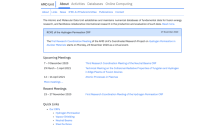Browse Resources
(8 classifications) (11 resources)
| Computer network resources
(5)
Databases (5) Instruments. (4) Periodicals (1) |
Research
(11)
Societies, etc. (1) Study and teaching (5) Tables. (2) |
Resources | |||||||||||||||||||||||||||||||||||||||||||||||||||
|---|---|---|---|---|---|---|---|---|---|---|---|---|---|---|---|---|---|---|---|---|---|---|---|---|---|---|---|---|---|---|---|---|---|---|---|---|---|---|---|---|---|---|---|---|---|---|---|---|---|---|---|
| |||||||||||||||||||||||||||||||||||||||||||||||||||
| Next → | |||||||||||||||||||||||||||||||||||||||||||||||||||



